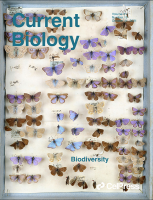“Animals originated in the oceans and evolved there for hundreds of millions of years before adapting to terrestrial environments. Today, oceans cover more than two-thirds of Earth and generate as much primary production as land. The path from the first macrobiota to modern marine biodiversity involved parallel increases in terrestrial nutrient input, marine primary production, species’ abundance, metabolic rates, ecotypic diversity and taxonomic diversity. Bottom-up theories of ecosystem cascades arrange these changes in a causal sequence. At the base of marine food webs, nutrient fluxes and atmosphere–ocean chemistry interact with phytoplankton to regulate production. First-order consumers (e.g., zooplankton) might propagate changes in quantity and quality of phytoplankton to changes in abundance and diversity of larger predators (e.g., nekton). However, many uncertainties remain about the mechanisms and effect size of bottom-up control, particularly in oceans across the entire history of animal life. Here, we review modern and fossil evidence for hypothesized bottom-up pathways, and we assess the ramifications of these processes for four key intervals in marine ecosystems: the Ediacaran–Cambrian (635–485 million years ago), the Ordovician (485–444 million years ago), the Devonian (419–359 million years ago) and the Mesozoic (252–66 million years ago). We advocate for a clear articulation of bottom-up hypotheses to better understand causal relationships and proposed effects, combined with additional ecological experiments, paleontological documentation, isotope geochemistry and geophysical reconstructions. How small-scale ecological change transitions into large-scale evolutionary change remains an outstanding question for empirical and theoretical research.” Published in Current Biology

